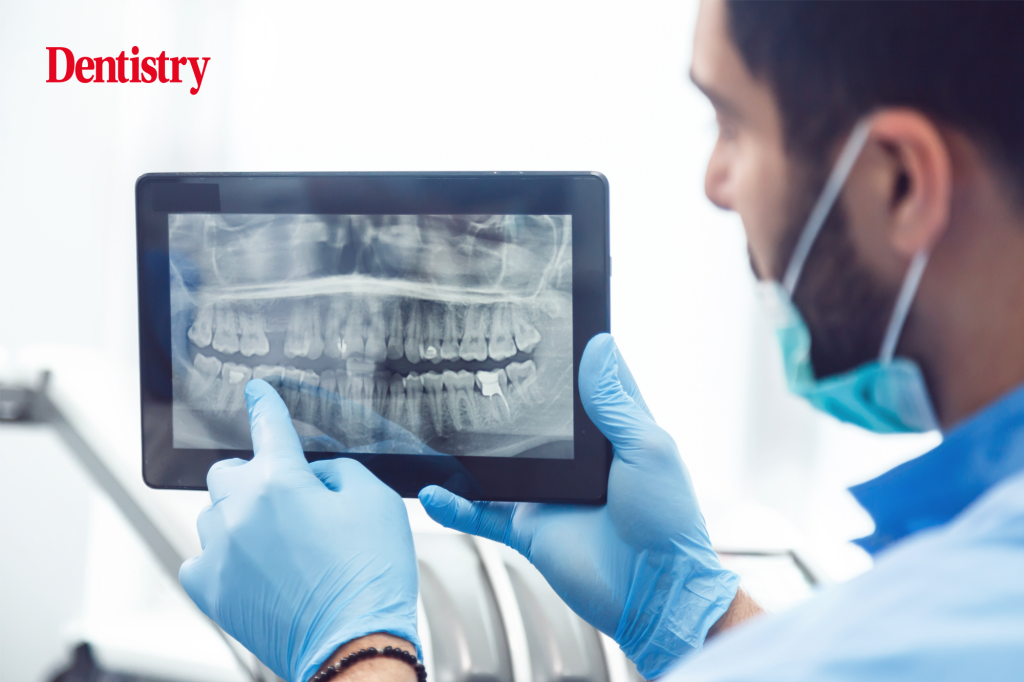
Christian Ehrensberger explains how AI can reduce the burden of repetitive tasks for dental professionals when diagnosing.
Artificial intelligence (AI) is one of the most important topics going forward. It helps in a number of areas by completing repetitive tasks with great accuracy and speed. In dental practices in particular, it is already improving the effectiveness, safety and comfort of daily working life.
The basics of AI are easy to understand. The learning algorithm is presented with many X-ray images and the information ‘image is positioned correctly’ or ‘image must be rotated’, including the correct rotation. AI then generates a response to new X-ray images and a human corrects them. Over time, it automatically recognises whether an image is positioned correctly or needs to be adjusted.

AI rotates the X-ray image into the correct position
This learning process has already been completed for commercially available programmes. The dental X-ray team directly benefits from the integrated AI, which automatically rotates inverted X-ray images by 90 degrees or turns them upside down. This means that the radiographer no longer has to perform many time-consuming and monotonous manual rotations every day.

When using image plates, AI can detect whether the image is exposed on the wrong side. Wrong-side exposure means that the image plate was exposed on the wrong side. AI detects this and notifies the X-ray team.
Image plates can be exposed hundreds of times. However, during their life cycle they are subjected to mechanical stress. In order to ensure that the image quality remains at a consistently high level, AI notifies the surgery team when a plate needs to be replaced (in conjunction with VistaScan image plates IQ).
Dental notation, OPG optimisation, ceph analysis
As well as this, AI can perform a number of other helpful functions, such as automatic tooth detection. This function automatically identifies teeth on the X-ray image and documents and displays the corresponding dental notation. VistaSoft can then be used to automatically compile a tooth status.


Another function that helps save time is the AI-assisted mandibular canal detection system. Within a matter of seconds, it calculates the position of the nerve canal in three-dimensional X-ray images. The dentist simply has to check the proposal as opposed to having to draw the canal himself.
AI is also able to optimise certain images. For example, in 3D X-ray images, different images can be extracted from the raw data, such as a panoramic image. AI can adapt this type of OPG to the anatomy of the patient. This provides the dentist with the most meaningful image possible based on the 3D raw data.

Photos: Dürr Dental
In orthodontic diagnostics, cephalometric analysis can be carried out within seconds using AI. The artificial intelligence automatically plots reference points and soft tissue silhouettes on the X-ray image. The entire treatment can be documented with several of these images at various stages in the process. Each of the following steps of treatment can also be simulated in advance. This ultimately provides a good basis for clarifying the treatment goals to the patient and how to achieve them.
Conclusions for the practice
Artificial intelligence can help to alleviate the burden of routine tasks on valuable medical personnel. This allows dentists and assistants to dedicate more time to their patients.
Meanwhile, current AI applications help solve a number of everyday problems. They support digital workflows in the dental practice in a variety of areas. This applies to X-ray diagnostics in particular. In this case, AI improves the efficiency of the entire workflow and saves the team valuable working time.
The tools described here can always be assigned to specific devices that are typically used in dental practices. It is immediately clear which specific tasks artificial intelligence is taking over from the team. AI is also likely to take on more complex tasks in the future. Progress could be made in the field of diagnostic support, such as detecting caries or signs of pathological developments in general.
For VistaScan and VistaCam enquiries please contact Dan Nolan on 07966 624020 or [email protected].
For CBCT and panoramic X-Ray systems please contact Adam Cartwright on 07961 570839 or [email protected].


